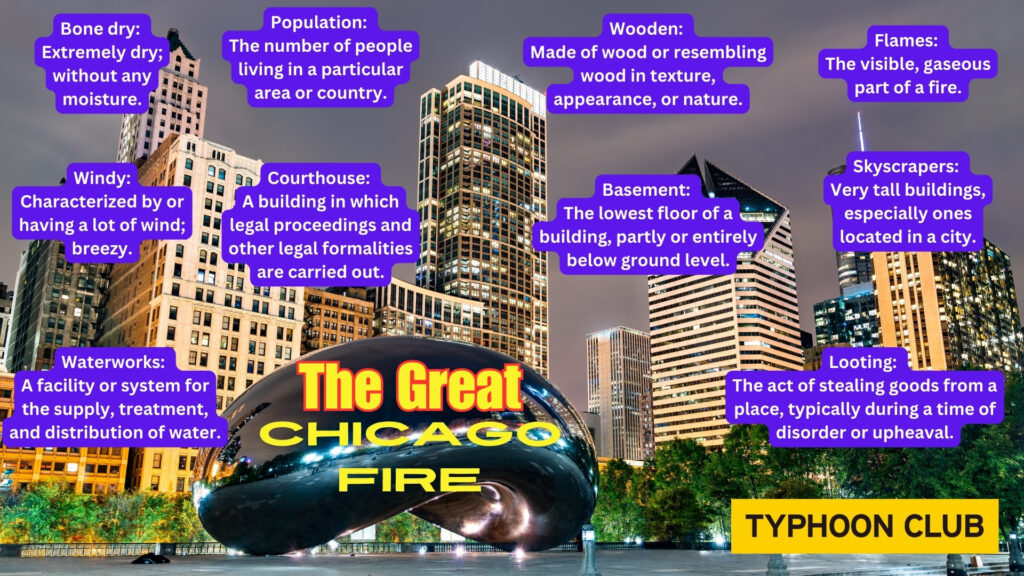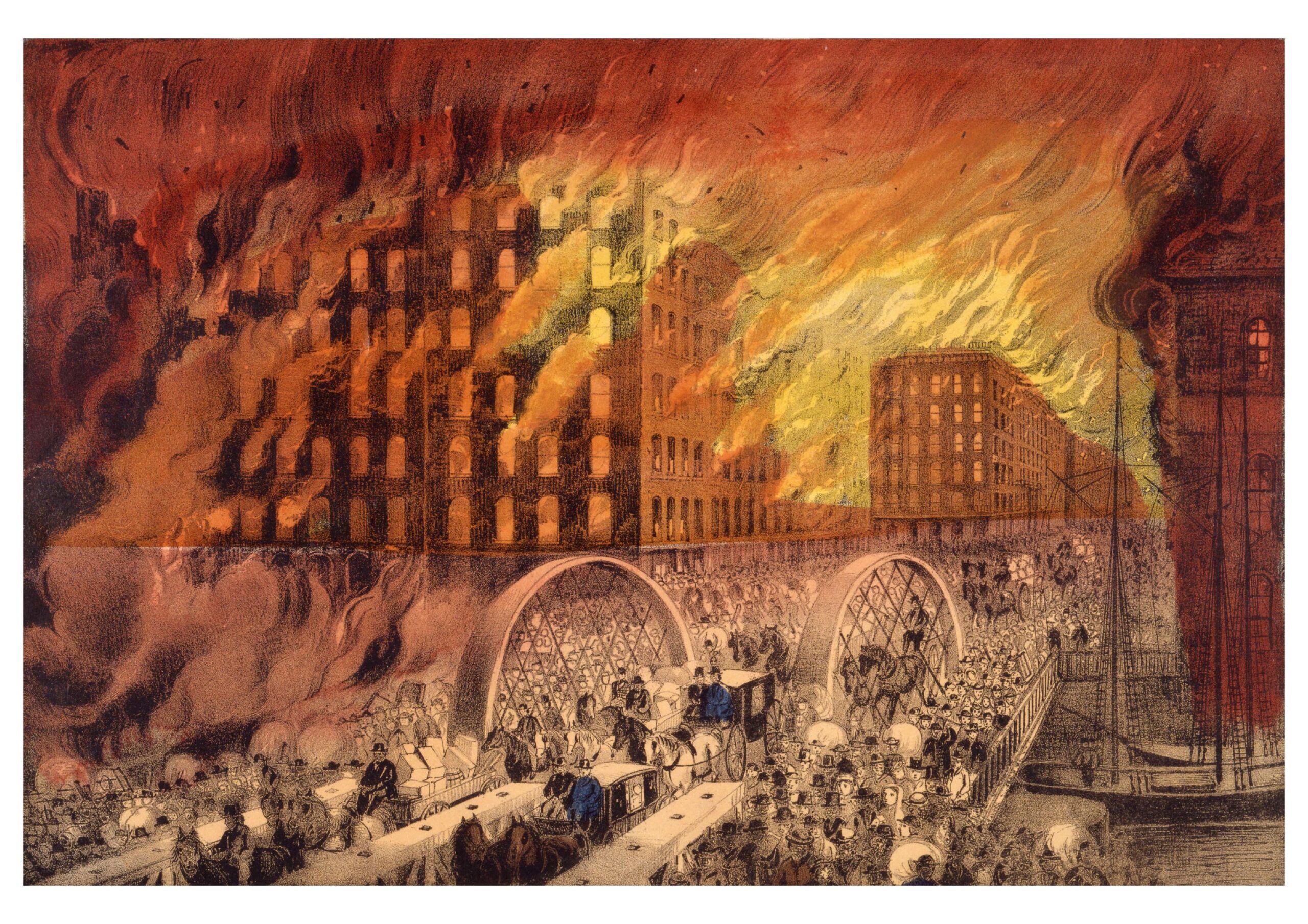
Looking at photographs of Chicago today – it is one of the U.S.A.’s largest cities – you may be surprised to learn that a terrible event back in 1872 that nearly destroyed the city completely. Sparked by a cow’s accidental kick of an oil lamp, the fire engulfed the city, reducing over 60% of its wooden structures to ashes and leaving 300 people dead and 100,000 homeless.
The story goes that on the evening of 8th October 1871 in Chicago, USA, Mrs Catherine O’Leary was sitting in her barn with her cow. It was dark and an oil lamp was shining brightly. For some reason known only to itself, the cow kicked the lamp over. Within seconds, the straw on the floor was in flames. This is said to be the cause of the Great Chicago Fire.
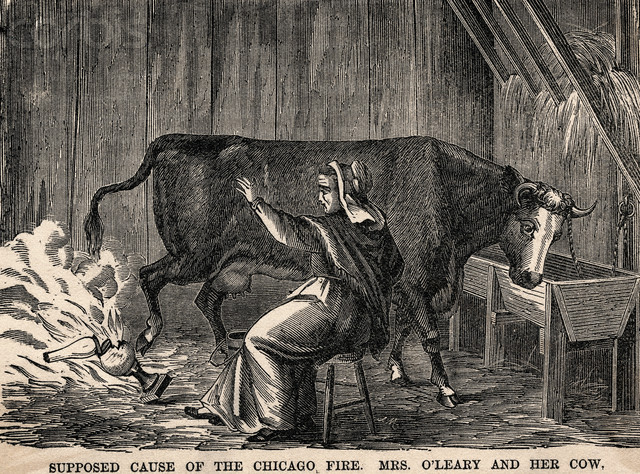
In those early days, this great city had a population of 324,000. Most of the residents lived in wooden homes. In fact, over 60 per cent of Chicago was built from wood. There had been only two centimetres of rain between July and October and the place was bone dry. The flames spread very quickly thanks to a strong wind. Chicago was not known as Windy City for nothing.
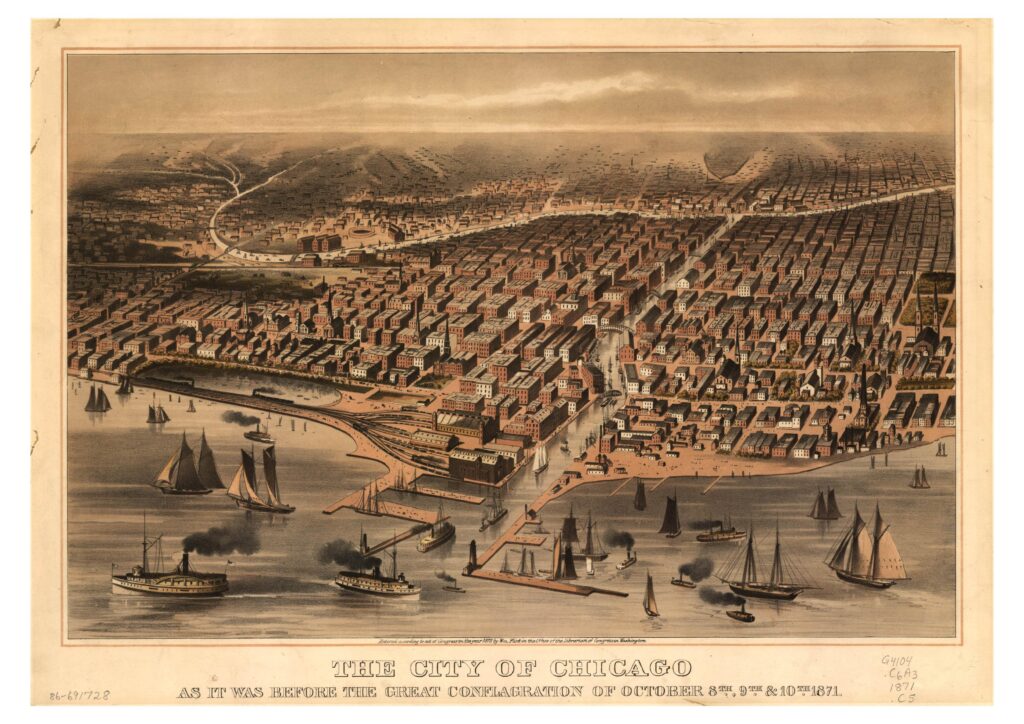
Eventually, the courthouse at the centre of the city caught fire. Prisoners that were kept in the basement jail had to be released. They went looting. Next came the city waterworks. It was soon burnt to the ground and the city’s water supply was cut off. All the firemen could do was watch their city burn to the ground.

The fire did not come under control until the 10th October. On that same day fresh timber was delivered and the rebuilding of Chicago began. Some religious groups said that Chicago had grown too quickly, and the city should return to more traditional ways of living. Others said that it would be better to improve fire and building regulations.
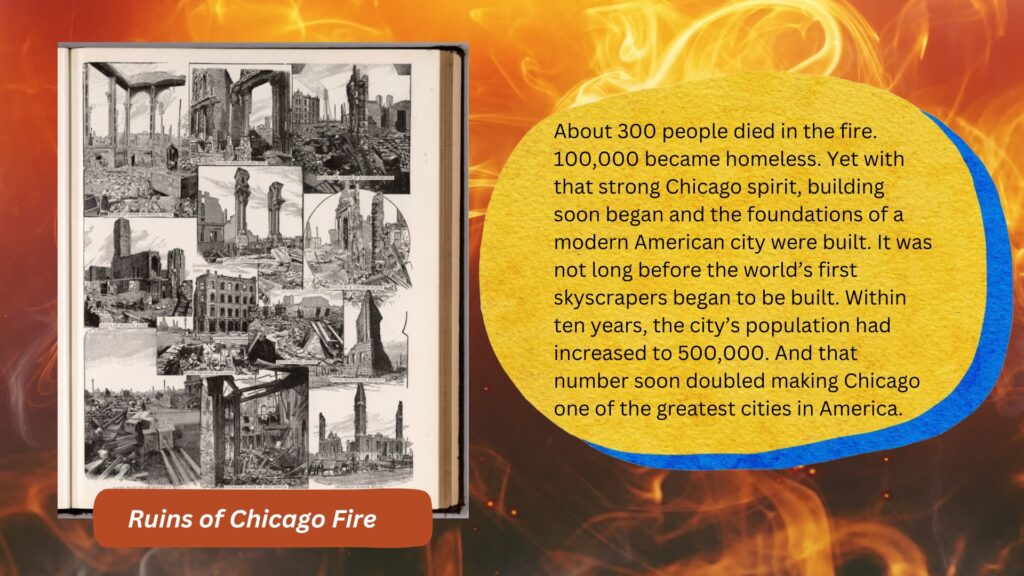
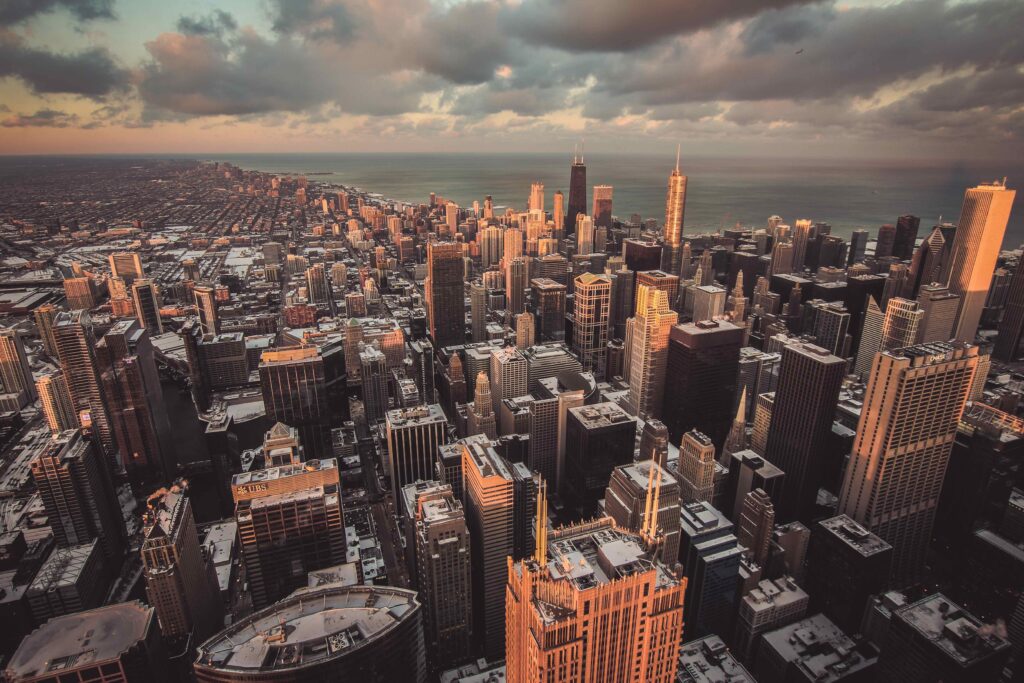
Question:
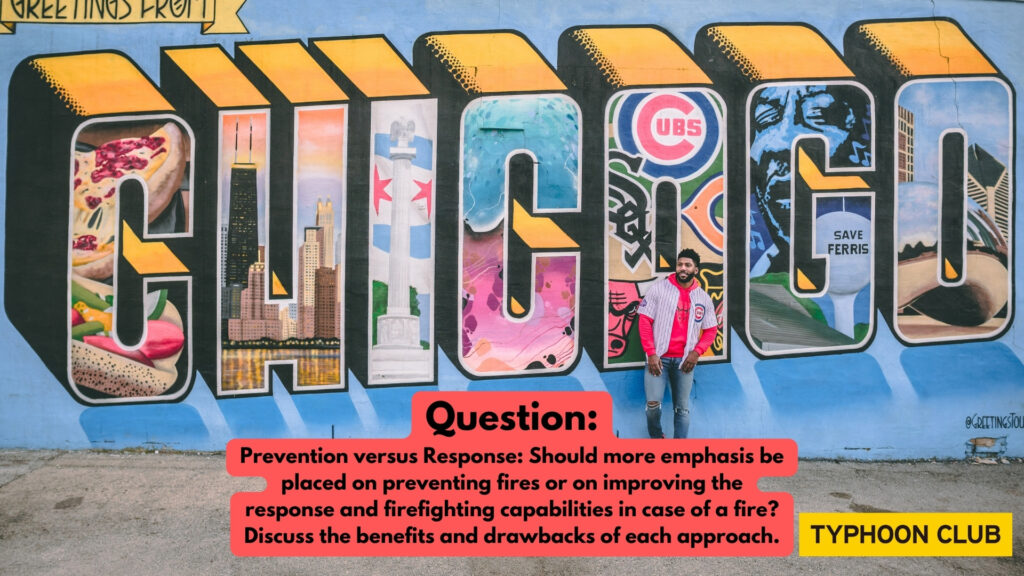
How the Great Fire of 1871 benefitted Chicago
VOCABULARY
